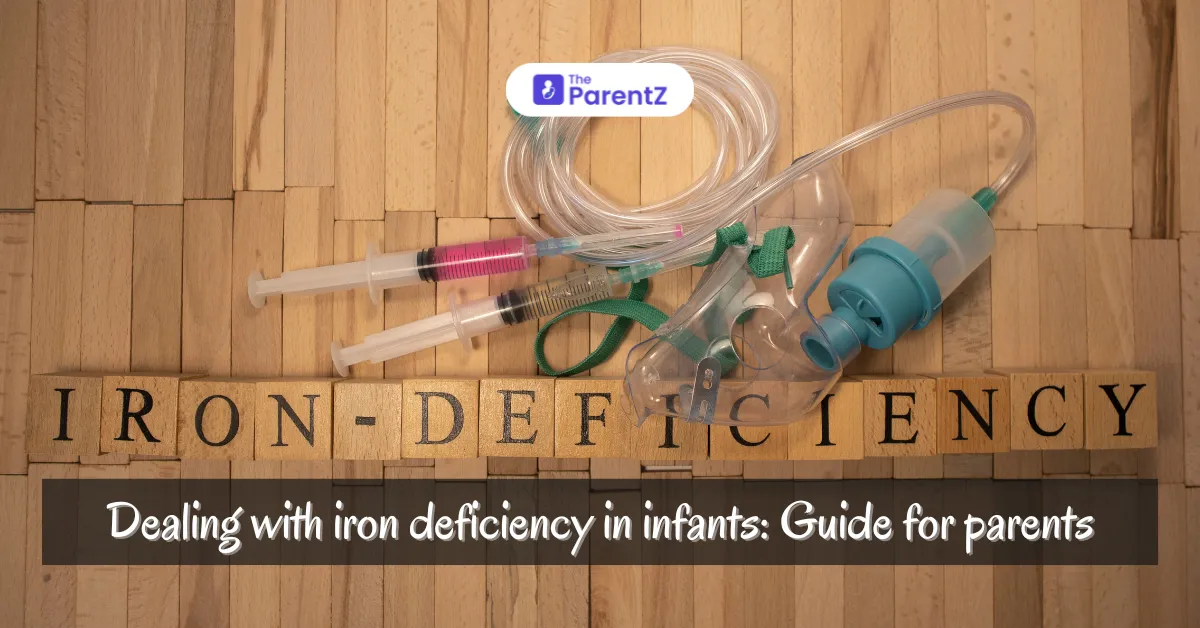Iron is one of the most essential minerals that plays a crucial role in the production of hemoglobin, which carries oxygen in the blood. Iron is very important for growth and overall health. Iron deficiency can lead to serious malfunctioning in infants. Let’s find out about iron deficiency in infants. Also, read the entire article to know about bonus tips.
Normal Iron Levels In Infants
Normal Serum Ferritin Level:
• Infants (6-12 months): 7-140 ng/mL
• Children (1-5 years): 12-300 ng/mL
Normal Hemoglobin Levels:
• Infants (0-6 months): 10.0-14.0 g/dL
• Infants (6-12 months): 11.0-14.0 g/dL
Iron Deficiency
When is a child iron deficit?
Iron deficiency occurs when the body does not have enough iron to meet its needs. This can lead to iron deficiency anemia, where there are insufficient red blood cells to carry adequate oxygen to the body’s tissues.
How to figure out iron deficiency in infants?
Signs of Iron Deficiency In Infants
• Pale skin
• Brittle nails
• Decreased activity levels
• Weakness or fatigue
• Irritability
Symptoms of Iron Deficiency Anemia In Infants
• Fatigue or lethargy
• Shortness of breath, especially during physical activity
• Increased heart rate
• Poor appetite
• Delayed growth and development
Problems Associated with Iron Deficiency In Infants
• Developmental delays and cognitive impairments
• Weakened immune system, leading to increased susceptibility to infections
• Long-term complications if left untreated, including cardiovascular issues and potential lasting effects on mental development
Tests to Diagnose Iron Deficiency In Infants
1. Complete Blood Count (CBC): Measures hemoglobin levels, hematocrit, and red blood cell indices.
2. Serum Ferritin Test: Indicates the amount of stored iron in the body.
3. Serum Iron and Total Iron Binding Capacity (TIBC): Measures the amount of circulating iron and the blood’s capacity to bind iron with transferrin.
4. Reticulocyte Count: Assesses bone marrow activity in producing new red blood cells.
Prevention
• Breastfeeding: Exclusive breastfeeding for the first six months; breast milk contains easily absorbed iron.
• Iron-Fortified Formula: For infants not breastfed, iron-fortified formula is recommended.
• Introducing Iron-Rich Foods: After six months, include iron-rich foods in the diet (e.g., pureed meats, beans, lentils, iron-fortified cereals).
• Vitamin C: Encourage foods high in vitamin C (e.g., citrus fruits, tomatoes) to enhance iron absorption from plant sources.
• Regular Screening: Pediatricians often screen for iron deficiency at well-child visits, especially for infants at higher risk.
Conclusion
Parents should take extra care of infants who suffer from Iron deficiency because in infants it can have significant health implications, but with proper nutrition and monitoring, it can be effectively managed and prevented. Regular visits to the doctor are essential for early detection and intervention. Iron deficiency is a major problem but it can be taken care of with proper steps. As a parent, do not get worried but be competent enough to deal with such a problem.








Be the first one to comment on this story.